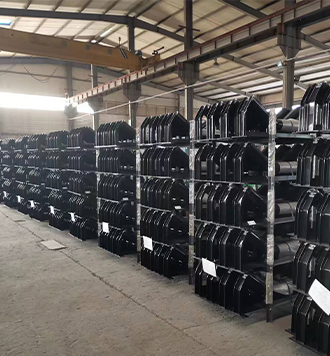 Afrikaans
Afrikaans  Albanian
Albanian  Amharic
Amharic  Arabic
Arabic  Armenian
Armenian  Azerbaijani
Azerbaijani  Basque
Basque  Belarusian
Belarusian  Bengali
Bengali  Bosnian
Bosnian  Bulgarian
Bulgarian  Catalan
Catalan  Cebuano
Cebuano  Corsican
Corsican  Croatian
Croatian  Czech
Czech  Danish
Danish  Dutch
Dutch  English
English  Esperanto
Esperanto  Estonian
Estonian  Finnish
Finnish  French
French  Frisian
Frisian  Galician
Galician  Georgian
Georgian  German
German  Greek
Greek  Gujarati
Gujarati  Haitian Creole
Haitian Creole  hausa
hausa  hawaiian
hawaiian  Hebrew
Hebrew  Hindi
Hindi  Miao
Miao  Hungarian
Hungarian  Icelandic
Icelandic  igbo
igbo  Indonesian
Indonesian  irish
irish  Italian
Italian  Japanese
Japanese  Javanese
Javanese  Kannada
Kannada  kazakh
kazakh  Khmer
Khmer  Rwandese
Rwandese  Korean
Korean  Kurdish
Kurdish  Kyrgyz
Kyrgyz  Lao
Lao  Latin
Latin  Latvian
Latvian  Lithuanian
Lithuanian  Luxembourgish
Luxembourgish  Macedonian
Macedonian  Malgashi
Malgashi  Malay
Malay  Malayalam
Malayalam  Maltese
Maltese  Maori
Maori  Marathi
Marathi  Mongolian
Mongolian  Myanmar
Myanmar  Nepali
Nepali  Norwegian
Norwegian  Norwegian
Norwegian  Occitan
Occitan  Pashto
Pashto  Persian
Persian  Polish
Polish  Portuguese
Portuguese  Punjabi
Punjabi  Romanian
Romanian  Russian
Russian  Samoan
Samoan  Scottish Gaelic
Scottish Gaelic  Serbian
Serbian  Sesotho
Sesotho  Shona
Shona  Sindhi
Sindhi  Sinhala
Sinhala  Slovak
Slovak  Slovenian
Slovenian  Somali
Somali  Spanish
Spanish  Sundanese
Sundanese  Swahili
Swahili  Swedish
Swedish  Tagalog
Tagalog  Tajik
Tajik  Tamil
Tamil  Tatar
Tatar  Telugu
Telugu  Thai
Thai  Turkish
Turkish  Turkmen
Turkmen  Ukrainian
Ukrainian  Urdu
Urdu  Uighur
Uighur  Uzbek
Uzbek  Vietnamese
Vietnamese  Welsh
Welsh  Bantu
Bantu  Yiddish
Yiddish  Yoruba
Yoruba  Zulu
Zulu conveyor belt pulley types
Understanding Conveyor Belt Pulley Types
Conveyor belts are integral components in various industries, facilitating the efficient movement of materials. At the heart of these systems lies the conveyor belt pulley, a crucial element that drives, redirects, or supports the belt in motion. Understanding the different types of conveyor belt pulleys and their applications is essential for optimizing performance and ensuring operational efficiency.
1. Drive Pulleys
Drive pulleys, also known as head pulleys, are typically located at the discharge end of the conveyor system. These pulleys are responsible for moving the belt forward by applying tension. Drive pulleys are often equipped with a lagging surface, which enhances friction between the pulley and the belt, ensuring effective traction. The materials used for lagging can vary, with options including rubber, ceramic, or even metal, depending on the specific requirements such as the load type, speed, and environmental conditions.
2. Tail Pulleys
Opposite the drive pulleys, tail pulleys are located at the loading end of the conveyor. Their primary function is to support the return side of the belt and keep it aligned. While they do not drive the belt, they play a critical role in maintaining the overall stability of the conveyor system. Tail pulleys are typically designed to be low-friction to minimize wear and extend the life of the conveyor belt.
3. Snub Pulleys
conveyor belt pulley types

Snub pulleys are used to increase the belt’s contact angle with the drive pulley, thereby enhancing the frictional grip during operation. This is particularly useful in situations where the belt needs to be frequently adjusted for tension or when the load demands extra traction. By altering the belt’s path, snub pulleys help in achieving better operational efficiency and effective load handling.
4. Bend Pulleys
Bend pulleys change the direction of the conveyor belt, allowing it to navigate around corners or other obstacles. These pulleys are essential in setups where space is limited or when the conveyor system needs to follow a specific path. Bend pulleys come in various configurations, depending on the angle required and the specifics of the installation.
5. Return Pulleys
Return pulleys are located along the underside of the conveyor belt, primarily to support the belt as it returns to the drive pulley. These pulleys ensure a smooth return path and help to maintain proper belt tension. Return pulleys are often covered with materials that reduce friction, contributing to a longer service life for both the pulley and the conveyor belt.
Conclusion
Each type of conveyor belt pulley plays a significant role in the overall performance of a conveyor system. Understanding these diverse pulley types and their specific functions allows industries to choose the right components for their systems, enhancing productivity and reducing maintenance costs. Whether for heavy-duty applications or lightweight operations, selecting the proper pulleys is essential for optimizing conveyor efficiency and reliability. As industries continue to evolve, the importance of reliable conveyor systems remains pivotal in maintaining seamless logistics and operational success.





























